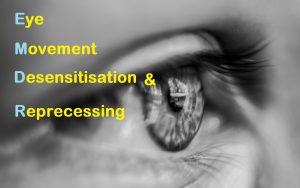
EMDR (Eye Movement Desensitisation and Reprocessing Therapy)
About EMDR
EMDR is relatively a new but unique form of psychotherapy designed to diminish the negative feelings associated with traumatic events memories. The EMDR therapist uses a hand motion technique to guide the client’s eye movements from side to side. The recent studies show that EMDR is effective for treating certain conditions.
What to look when choosing an EMDR therapist?
When it comes to choosing a professional like EMDR therapist in counselling, you must look for the therapist’s profile i.e. qualification, experience and working experience with various clients using multiple techniques. Also, it is advisable to find a therapist whose credentials show accreditation with related governing bodies; i.e. BACP, BPS and BABCP etc.
how does it work?
The aim of EMDR is to process comprehensively the previous experiences and find the solution fo the emotions attached to those experiences. Negative thoughts and feelings are replaced with positive thoughts and feelings. This process of thoughts replacement helps and encourages healthier behaviour as well as social interactions. In result, the clients would adapt and learn how to handle stressful situations. EMDR therapy follows eight phases:
- History and treatment planning; the therapist assesses your readiness and develops a treatment plan.
- Preparation; to establish trust and explain the treatment in depth, the therapist ensures that the client has many ways of handling the emotional suffering.
- Assessment; to establish negative feelings and identify positive replacements to process thoughts.
- Desensitisation; which includes the eye movement technique, the therapist moves his/her fingers back and forth in front of your face and would ask to follow the hand motions with your eyes. The therapist will also have made you recall a disturbing incident at the same time. This process will include body sensations and emotions.
- Installation; to strengthen positive replacements, the therapists will guide you to move your thoughts to more pleasant thoughts.
- Body scan; to see if you are now able to bring up memories of trauma without experiencing negative feelings that are no longer relevant, or if reprocessing is necessary.
- Closure; which occurs at the end of every session. The therapist would ask you to keep logging the detail. The log consists of all related material that may arise. Logging helps to remind you of the self-calming activities.
- Re-evaluation; this collects all related historical event, current incidents that elicit distress. This also focuses the future events that will require different responses.
For further information, please email us at info@diversewellbeingservices.co.uk